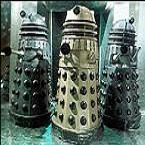Nikademus
Posts: 25684
Joined: 5/27/2000
From: Alien spacecraft
Status: offline

|
'Random' surface engagements were rare i would agree
TF's with a specific mission however have a much greater chance, dependant on the level of commitment of the naval staff involved, the agressiveness of the attacker/intruder, and the willingness to engage by the defender. (examples would be the Barrants Sea engagement, North Cape, Java sea, Battle of Sirte etc etc)
carrier TF's on the other hand would have virtually a nil chance for engagement as any carrier commander worth his salt will usually attempt to avoid making themselves an easy target while nighttime grounds their primary weapon for the most part. (dependant again on stance and course settings. (and the speed of the group) So while the surface commander has the desire, and the agressiveness, the carrier commander most definately does not wish to initiate reducing the chances for a meeting of the minds.....that is, unless the operational commander (i.e. YOU :) ), overrides him and orders the TF to remain in the area (no retirement allowed) or same hex or advances them farther into enemy territory. If a fast enemy surface TF is nearby.....it might/should increase the chance for an intercept.
I would agree that a surface TF, with a specific mission for combat/interception should be able to "react to enemy" in the same vein as a carrier TF. However it is a given that it is far more difficult to arrange a rondevous between surface ships, which must obtain visual or near visual contact with their target, and aircraft which are far far faster and can be launched from even hundreds of miles away. The difference therin is the more subtle but key advantage of airpower as represented in the game
IIRC, with previous wargames, the chance for an link up between surface forces at the operational level was largely a factor of mission, rating of the commander (if factored at all) and most importantly, speed and the ratio of speed difference between opposing TF's.
For example, if a fast cruiser force with a 'surface combat' mission detects or is pointed in the direction of a slow transport force then the chance for a successful interception ('react to enemy' interaction) should be much greater than an opposing TF of similar speed.
Add to that variables to determine move-countermove etc etc and you get the eventual modified percentage, all of which would be invisible to the player who is cast in the role of operational commander.
In game terms these variables could be influenced by the orders given at the onset by the player, such as the "do not retire/retirement allowed" toggle
A transport TF with the former setting would be a simulation of a must-get through convoy regardless of risk and any current threat acessments, such as the early British Malta convoys.
A transport/supply TF with a retirement allowed option would be the opposite.....important (as all supply TF's are) but not so important as to ignore developments in the threat situation. Such a convoy/TF should be by default much harder to intercept assuming the defending side becomes aware of the presence of enemy forces (which usually happens in the game due to the proliferation of seaplanes and other search aircraft)
Leadership and inspiration ratings should also play a direct part in these interactions.
From what i've read on this thread, it sounds like UV is pretty much doing this though admitedly, i have yet to see a sucessful 'intercept' due to 'react to enemy'
In my test scenerios to check on the other aspects of the surface combat routine however, i can confirm that two surface TF's that share the same destination hex, even if its an open sea hex, do indeed initiate combat, (day and night)
base interactions work well too. Bombardment TF's are usually intercepted first by defending surface combat TF's before they can bombard. Same situation when transport TF's are present, the intruding TF must first fight it's way through the defending surface combat TF.
|
 Printable Version
Printable Version














 New Messages
New Messages No New Messages
No New Messages Hot Topic w/ New Messages
Hot Topic w/ New Messages Hot Topic w/o New Messages
Hot Topic w/o New Messages Locked w/ New Messages
Locked w/ New Messages Locked w/o New Messages
Locked w/o New Messages Post New Thread
Post New Thread